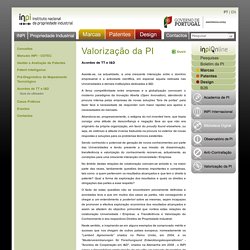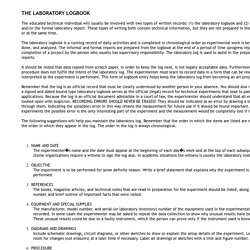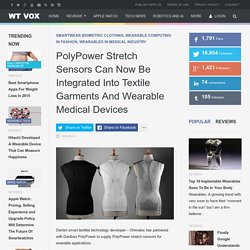

Solar shirt debuts potential of Holst thin-film solar cells on garments. Modwells: Personal Modules for Wellness. MarkForged Insoles with Electronics. World's 1st Graphene Filament. Investigação Clínica com dispositivos médicos. A rotulagem dos dispositivos médicos em investigaçãoAo abrigo do ponto 13.5.8 do Anexo I e do ponto 17.2, alínea e) do Anexo X do Decreto-Lei n.º 145/2009, de 17 de Junho, na sua actual redacção, todos os dispositivos médicos e dispositivos médicos implantáveis activos destinados a estudos clínicos deverão ter inscrita a menção "exclusivo para investigação clínica".

Decisões da Autoridade Competente e prazosA submissão dos estudos clínicos com intervenção de dispositivos médicos ao Infarmed está contemplada no Artigo 33.º da Lei n.º 21/2014, de 16 de abril. Artigo 33.ºEstudos clínicos com intervenção de dispositivos médicos Alterações ao protocolo aprovadoO promotor deve solicitar à CEC a modificação substancial do protocolo, e o estudo clínico só pode prosseguir de acordo com o protocolo alterado após parecer favorável da mesma. Para saber mais sobre cooperação empresarial. Não pode improvisar quando se trata de encontrar um bom parceiro, estabelecer objectivos, negociar contratos, e finalmente, criar uma cooperação.

INPI - Instituto Nacional da Propriedade Industrial. Assiste-se, na actualidade, a uma crescente interacção entre o domínio empresarial e a actividade científica, em especial aquela radicada nas Universidades e demais instituições dedicadas à I&D.

How to Start–and Keep–a Laboratory Notebook: Policy and Practical Guidelines. Thomson JA. 2007.

How to Start—and Keep—a Laboratory Notebook: Policy and Practical Guidelines. In Intellectual Property Management in Health and Agricultural Innovation: A Handbook of Best Practices (eds. A Krattiger, RT Mahoney, L Nelsen, et al.). MIHR: Oxford, U.K., and PIPRA: Davis, U.S.A. The Laboratory Logbook. The experimenters name and the date must appear at the beginning of each days work and at the top of each subsequent page.

(Some organizations require a witness to sign the log also. In academic situations the witness is usually the laboratory instructor.) The experiment is to be performed for some definite reason. Write a brief statement that explains why the experiment is to be performed. The books, magazine articles, and technical notes that are read in preparation for the experiment should be listed, along with the page number and brief outline of important facts that were noted. The manufacturer, model number, and serial (or laboratory inventory) number of the equipment used in the experimentation should be recorded. The Laboratory Logbook. Lab Notebook Example. Energy-Generating Cloth Could Replace Batteries in Wearable Devices. PolyPower Stretch Sensors Can Now Be Integrated Into Textile Garments And Wearable Medical Devices.
Danish smart textiles technology developer – Ohmatex has partnered with Danfoss PolyPower to supply PolyPower stretch sensors for wearable applications.

The sensors combine PolyPower stretch sensing technology with an Ohmatex textile cabling and connector. The combination of the stretch sensor with Ohmatex textile cabling enhances the comfort and ease with which it can be integrated into textile garments and wearable medical devices. It is a high quality advanced development in stretch sensing technology and one of the most unobtrusive and conformable capacitive sensors currently on the market. Ohmatex said it is currently using PolyPower stretch sensors in the development of a sensor platform for health and fitness applications, part of the FP7 MyWear project. A Wearable Display for Team Sports » Tutorial: How to Control EL Panels or Wire Using a Microcontroller.
One of the key aspects of this project is to be able to control wearable displays using a wearable computer.

The wearable displays I am using are Electroluminescent (EL) Panels and Wire. These displays are not like regular LED’s cannot be switched on with a microcontroller quite so easily, as in this example. It took me quite a long time to figure out how to do this, and I must thank Mikey Sklar who explained the process to me. These are more like instructions than a tutorial, and will explain to you how to set up the necessary components. So if you are interested in using EL displays in your next wearable computing project, this tutorial will explain how to switch and control them using a microcontroller. X-io Technologies. Waterproof your Wearables : Materials Checklist. Below are a list of supplies that are the recommended for this instructable.

Of course certain items can be completely eliminated or substituted with others. In order to for us to focus on teaching you the encapsulation technique and to easily demonstrate the waterproofing performance, we be creating a simple electronic device soldering a simple wearable component (LilyPad LED) and attaching it to a power source with alligator clips. Once you've gotten down the encapsulation technique, go buck wild with testing different or similar simple or complex electronic devices and their performance in different water-based environments! Here's what you're going to need: - Corning Sylgard 184 Kit (PDMS) . - Plastic disposable containers as molds (2 are used, one to mix in and the other as the mold) . - Disposable spoons (2 spoons used, one for the elastomer base and the other for the curing agent). Machine Embroidery covering Conductive Thread. Researchers Demonstrate Micro 3D Printing with Atom-Thin Graphene Ink.
Medical Images in the Cloud: Striking a Balance Between Privacy and Convenience. Healthcare is a people business, and collaboration among people is core to delivering effective care.

On the other side of the spectrum, we are also very sensitive about our health information because we value our privacy. These two values can come into conflict when healthcare professionals are trying to provide care. The easier it is to share and access information, the more likely it is that we will have good care outcomes. At the same time, this also creates more opportunities for data leaks. Finding the right balance can sometimes feel like being stuck between a rock and a hard place.This tug of war has existed for some time, but is coming to the forefront as the focus in healthcare shifts from fee-for-service, to value-based care.
In the world of medical imaging, this topic holds the spotlight. Optimum body part for. The market for Smart Watches and Fitness trackers is overflowing with products that depict the market´s typical maturing point: Customers know what they want and how much they pay to get what they want and are not easily impressed with fizzy specsMain market leaders* are established and are pushing out newcomers and non-specialists, unable to compete on price.New specs nor disruptive technologies are on the consumers´ mind when considering purchasing a smart watch.

For tracking and tracking your personal lifestyle it seems that all configurations on the wrist has been tried and tested. No new form factor appears to be on the tech horizon when it comes to ´wristables´.Added value in terms of market drivers are price and marketing currently, rather than the technology itself. The overall conclusion is that a smarter and fitter lifestyle driven by a wrist device has become available to the mainstream of consumers. BITalino (r)evolution by BITalino. Don't have time to see the full 7 minute video? Jump to the section most interesting for you: BITalino Introduction (2:46) | What's New (1:05) | Meet the Team (0:34) Solar cells created with inkjet technology.
April 3, 2008 Using FUJIFILM’s cartridge-based Dimatix Materials Printer (DMP), Konarka Technologies has demonstrated the world's-first fabrication of highly efficient solar cells using of inkjet printing technology. Inkjet technology operates by propelling variably-sized droplets of liquid or molten material onto almost any medium. Inkjets are the most common type of computer printer for the general consumer; however the technology has wider applications in the industrial arena. Printoo is a open-source platform of paper-thin circuit boards and modules. What is Printoo? Printoo is a printed electronics prototyping platform capable of bringing everyday objects to life. In a world where computers have become an integral part of our lives, Printoo aims to give people the ability to embed computational power into everyday object and devices.
Printoo also enables new ways to link the physical and the digital worlds. Printoo is composed by various hardware modules that can all be connected to each other. At its core is an Atmel ATmega328 microprocessor that is responsible for processing the information it gets from the environment. Printoo is extremely thin, lightweight and flexible, being easily embedded in various materials, even on paper! Dimatix Materials Printer DMP-2800. Ideal applications for the materials printer include: Material and fluid development and evaluationPrototype and sample generationFluid and substrate interactions evaluationProduct developmentOptimization and evaluation of digital patternsDeposition of biological fluids including cell patterning, DNA arrays, proteomics The DMP-2831 allows the deposition of fluidic materials on an 8x11 inch or A4 substrate, utilizing a disposable piezo inkjet cartridge.
Researchers print solar cells on paper - Design Engineering. In the journal Advanced Materials, researchers at MIT have announced that they’ve come up with a way to create solar cells by printing photovoltaic inks on standard office printer paper or fabric, drastically reducing the cost of solar cell manufacture and opening up a wide variety of unconventional applications. Unlike a standard ink-jet printing technique, the MIT process coats the paper using vapor-disposition at temperatures below 120 Celsius. The “printing” process takes place in a vacuum chamber where five layers of PV material are deposited in successive passes.
The result is a resilient but flexible solar cell that can can continue to generate electricity even when folded or bent. To test the cell’s durability, the MIT researchers printed a solar cell on a sheet of soda bottle (PET) plastic and then folded and unfolded it 1,000 times, with no significant loss of performance. Conceivably, just about any “printable” surface could be used to generate electricity. Solar Cells on Paper. Prof. Karen Gleason has come up with a low-cost, environmentally friendly way to make solar cells on ordinary tracing paper. Photo: Len Rubenstein Chemical engineer Karen K. Gleason would like to paper the world with solar cells. Glued to laptops, tacked onto roof tiles, tucked into pockets, lining window shades, she envisions ultrathin, ultra-flexible solar cells going where no solar cells have gone before. Silvery blue solar cells seem to magically generate electricity from sunlight the way Rumpelstiltskin spun straw into gold but in their present form, they’re more akin to gold than straw.
Gleason, the Alexander and I. Using abundant, inexpensive organic elements like carbon, oxygen, and copper — “nothing exotic,” she says — in a vacuum chamber, layers are “printed” through a process called vapor deposition, similar to frost forming on a window. “The challenge of the project appealed to me,” she says. By Deborah Halber « Previous | Next » Researchers print solar cells onto paper and fabric. 14th July 2011, Cambridge, MA By David L. Chandler, MIT. The EX¹ - rapid 3D printing of circuit boards by Cartesian Co.
Follow us on Facebook and Twitter for live updates. Check the updates tab above for more cool stuff! The Cartesian Co. printer EX¹ transforms electronics and prototyping in the same way that 3D printing has made things possible that were inconceivable even 5 years ago. The EX¹ printer is not designed to create any 3D object like normal 3D printers. It’s been crafted and designed for one key purpose, to allow you to 3D print circuit boards, layering silver nano particles onto paper or any suitable surface to rapidly create a circuit board. World-Leading Graphene Company - XG SciencesWorld-Leading Graphene Company – XG Sciences. Vor-ink™ Graphene Printed Electronics. Conductive Ink for Printed Electronic Our conductive ink is based on the oxygen free Graphene ink. Graphene Inks for Printed Electronics.
Introduction. Orders « Graphos. To order our products you can use our order form GRAPHOS ORDER FORM: Graphene Ink News. NPL wins grant for smart textiles research project. 10th October 2014, Teddington The National Physical Laboratory (NPL) has won a Knowledge Transfer Partnership (KTP) award from Innovate UK and will be partnering with Coventry University to work in the area of smart textiles. The team will be looking at additive techniques for applying conductive tracks to a range of textiles. There are numerous applications for the work across the wearable technology sector, for example within health, sport and the military, the NPL reports. On the winning road with X-BIONIC. Earlier this year when 4,662 innovative products from 1,865 inventive companies competed for one of the world’s most treasured design prizes, the red dot - X-BIONIC, the high-tech sportswear brand won double honours in Essen. Launches Ultra-Slim Flexible Glass.
Power outlet abandoned. Nikola Tesla free energy: unraveling Greatest Secret. Darpa Underwear Will 'Harvest' Soldiers' Energy, Give Them Killer Abs. Symposium. PolyPower Could be the Future of Sports and Medical Wearable Monitoring. Nanofibres power portable electronics. Smart clothing will power electronic devices. ECS researchers develop clothing that packs a powerful punch. Planet Analog - Thomas Kail - Energy Harvesting for Wearables. Energy Harvesting Technology - Cherry Switches. Wellness, Fitness, and Lifestyle Sensing Applications. Physio-Environmental Sensing and Live Modeling. Research Trend and Technical Challenges on Small Scale Energy Harvesting.
Asis - January 2011 - Energy Harvesting for Wireless Sensor Networks. #WIRELESS: "Smart Monitors Benefit from RF Energy Harvesting" Powercast Overview - RF Energy Harvesting and Wireless Power for Micr… Sustainable Energy Solutions: Energy Harvesting. Harvesting Energy For Wireless Sensors Review Of. MTL Annual Research Report 2013 » Self-powered Long-range Wireless Microsensors for Industrial Applications. MNS Group. Powercast's chipset and RF energy harvesting reference design enable low-cost wireless power over distance. Advanced Energy-Harvesting IC from STMicroelectronics Broadens Benefits of Battery-Free Technology.
Wireless device converts ‘lost’ microwave energy into electric power. Energy Harvesting & Solar Charging overview. Energy Harvesting Applications are Everywhere. POWERCAST. Self-Powered Wireless Sensor Networks Eliminate Battery Maintenance. Electronics and Electrical Engineering Design News. RF Energy Harvesting Enables Wireless Sensor Networks. Device captures energy in the air - Technology & science - Future of Technology. Zero Power Wireless Sensors Using Energy Harvesting. Energy Harvesting and Power Balance in Wireless Sensor Networks. Managing the power in wireless sensor networks powered by energy-harvesting circuitry. Product News - TI Offers Low-Power Converter to Advance Design of Energy-Harvesting Electronics. Energy harvesting wireless - the secret to M2M's success. Energy Harvesting for Low-Power Wireless Sensor Nodes. Energy Harvesting Enables Ultra-Low Power Applications. Energy Harvesting System Using 3-Stage Voltage Multiplier.
Energy Harvesting Reference Design. Wireless energy harvesting: how to get something from nothing. RF-based Wireless Charging and Energy Harvesting. Extremely Ingenious Engineering: High Power Wireless Energy Transfer. Nu Energy ™ Research Archive - Research Archive. New Generation of Radiant Energy Devices. Arduino 5 Minute Tutorials: Lesson 7 - Accelerometers, Gyros, IMUs. Protecting Sensitive Data in a Sensitive Industry. Não está disponível. FAQ. Liberating devices from their power cords. Liberating devices from their power cords. Wireless medical device interface and security. Mouser Electronics. Bluetooth Low Energy, Zigbee, and cognitive 3D-ICs add muscle to telehealth. Comparing Low-Power Wireless Technologies. Smart Skins. Applied Nanotech, Inc. Site/rapid-prototyping/
MEMs and nano materials in intelligent textiles: An overview. Fornecedores. Site/ From the Sustainable to the Flexible to the Edible, We Explore the Possibilities of 3-D Printing. Making electricity where it is needed. Making electricity where it is needed.